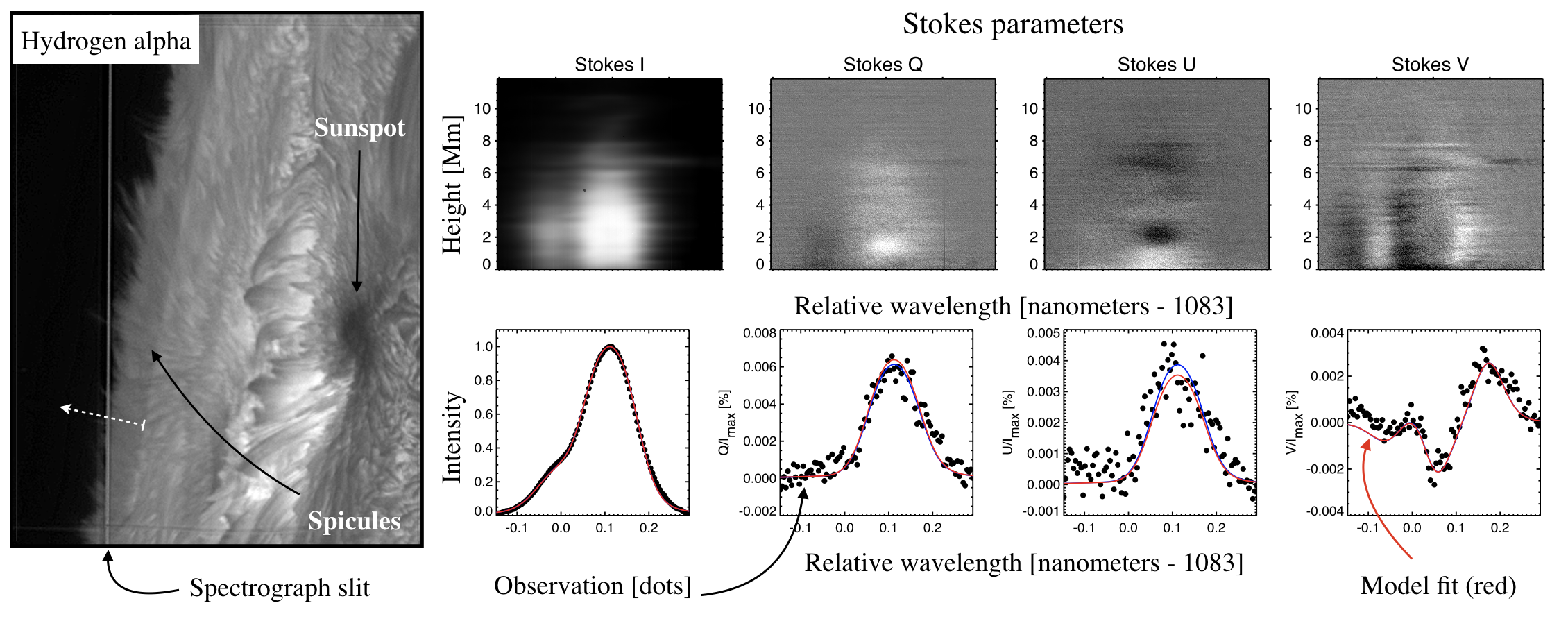Spicules are a very difficult target for existing solar telescopes, but measuring their magnetic fields is even more challenging. Fortunately, the European Solar Telescope will gather far more photons than any existing facility, greatly improving this situation. A post written by Dr. David Orozco Suárez, from Insituto de Astrofísica de Andalucía-CSIC (Spain).
 Left: H-alpha image of solar spicules. Right: Polarisation profiles of the He I 1083 nm triplet. German Vacuum Tower Telescope (Tenerife, Spain).
Left: H-alpha image of solar spicules. Right: Polarisation profiles of the He I 1083 nm triplet. German Vacuum Tower Telescope (Tenerife, Spain).
Among the most intriguing structures that can be seen on the Sun are spicules. They were discovered in the 19th century by Father Angelo Secchi and named spicules in 1945 by Walter Orr Roberts. With high spatial and temporal resolution, they are observed in the chromosphere as thin jet-like structures coming out of the solar limb. Spicules show very rapid variations (of the order of seconds) and have short lifetimes, decaying in less than a few minutes. They are significantly hotter than their surroundings. Although spicules cover only 1% of the solar surface, they may hold the key for understanding the heating of the chromosphere and corona. However, the me-chanism responsible for their formation is still unknown.
The observation of spicules is challenging due to their highly dynamic nature and narrow shapes. Many of their dynamic properties have been derived through imaging techniques, while their temperatures and densities have been inferred from spectroscopic measurements. However, the most important parameter associated with solar spicules —the magnetic field—, is extremely difficult to determine since polarisation measurements require long exposure times and are thus subject to strong blurring by the Earth’s atmosphere. The European Solar Telescope will gather far more photons than any existing facility, greatly improving this situation.
The image on the left shows spicules in the hot solar chromosphere as seen through an H-alpha filter. The region was scanned with a spectrograph slit (vertical thin line) and a polarimeter, to measure the 4 polarisation profiles (Stokes I, Q, U, and V) of the He I 1083 nm triplet (a spectral line sensitive to a wide range of field strengths). On the right, the top panels show a single slit position while the bottom panels display individual polarisation profiles. The observations were taken with the Tenerife Infrared Polarimeter at the German Vacuum Tower Telescope (Tenerife, Spain). The spicules are barely discernible due to the long integrations used. However, these observations were made under excellent seeing conditions.They are, by far, the best full polarimetric observations obtained to date (with 700 km spatial resolution) and have helped determine, for the first time, how the spicule magnetic field vector varies with height in the atmosphere.
The 4-m European Solar Telescope will significantly decrease the integration times, allowing us to resolve the fine-scale structure and complex dynamics of spicules by means of high-sensitivity full Stokes polarimetry in multiple spectral lines.
For more information, see Orozco Suárez et al., 2015, ApJ, 830, L18.
